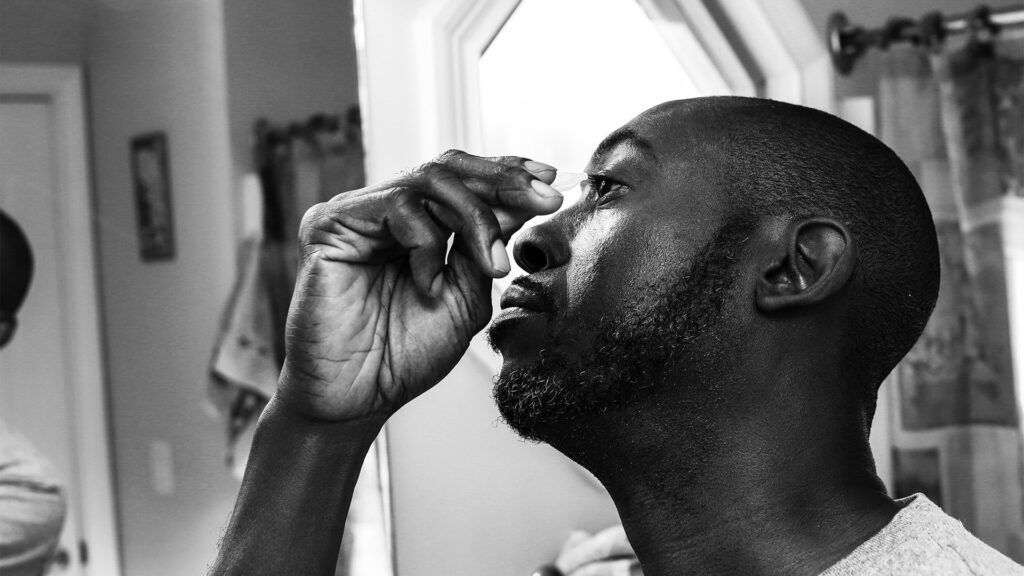While eye drops can help with diabetes-related symptoms, such as dry eyes or irritation, they do not treat the underlying retinopathy.
Diabetic retinopathy is a diabetes-related complication that affects the eyes. It occurs due to high blood sugar levels damaging the blood vessels of the light-sensitive tissue at the back of the eye, or the retina.
Over time, diabetes can damage these blood vessels, leading to vision problems and potentially blindness without proper management or treatment.
This article looks at whether eye drops can help diabetic retinopathy.
Diabetes resources
Visit our dedicated hub for more research-backed information and in-depth resources on diabetes.

Eye drops alone are generally insufficient to treat diabetic retinopathy. This condition
These treatments
However, medical professionals
These include:
- Nonsteroidal anti-inflammatory drug (NSAID) eye drops: These can help prevent or treat swelling in parts of the retina.
- Steroid eye drops: A doctor may recommend these alongside NSAID eye drops to reduce redness and inflammation.
- Over-the-counter (OTC) eye drops: Using OTC eye drops can help with eye pain, dryness, and soreness.
People must consult an eye care professional for an appropriate treatment plan. This is because the effectiveness of treatments can vary according to individual cases and the severity of the condition.
Doctors often use eye drops to dilate the eyes before an eye examination. These dilating drops temporarily enlarge the pupil, allowing the doctor to have a better view of the inside of the eye, including the retina.
This is essential for diagnosing the extent of retinal damage that diabetic retinopathy has caused and for determining the appropriate treatment.
Professionals
The treatment for diabetic retinopathy usually involves:
- Managing diabetes: The
most important step is to control blood sugar, blood pressure, and cholesterol levels. This can slow the progression of retinopathy andreduce the risk of vision loss. - Regular eye exams: Early detection through regular eye exams is crucial. This
allows for timely treatment before significant vision loss occurs. - Laser surgery: Professionals can use this method to seal off leaking blood vessels and reduce swelling in the retina.
- Vitreous surgery: In advanced cases, a person may require surgery to remove blood or scar tissue from vitreous. This is the jelly-like tissue in the middle of the eye.
- Injections: A doctor can inject medications into the eye
to reduce swelling and prevent the growth of new blood vessels.
While eye drops can help with symptoms relating to diabetes, such as dry eyes or irritation, they do not treat the underlying retinopathy.
The latest research in diabetic retinopathy treatment highlights a novel approach
Researchers at
This treatment significantly reduces microglial activation, inflammation, and vision decline in mice. The new method may show promise as an early intervention for diabetic retinopathy and help prevent advanced stage vision loss.
Regular eye exams are crucial for people with diabetes. The recommended frequency depends on the type of diabetes and how controllable it is.
People also need to contact a doctor in the following situations:
- Changes in vision: If someone notices any changes in their vision, such as blurriness, floaters, dark areas, or difficulty perceiving colors.
- Pregnancy: Pregnant people with diabetes
need to have a comprehensive eye exam in the first trimester and follow up as a doctor recommends. - Sudden vision loss: Immediate medical attention is
necessary if there is sudden vision loss. - Other symptoms: If someone experiences any other unusual eye symptoms, they need to consult a healthcare professional.
Early detection and treatment of diabetic retinopathy
The outlook for someone with diabetic retinopathy varies depending on several factors. These include the stage of the disease, how well they manage their diabetes, and whether they receive treatment.
Without treatment
Without treatment, diabetic retinopathy
Advanced stages of the condition, such as proliferative diabetic retinopathy, can cause severe complications, including retinal detachment and neovascular glaucoma.
With treatment
If people receive an early diagnosis of diabetic retinopathy and undergo effective treatment, the progression of the disease can often slow or stop.
This
In both scenarios, ongoing diabetes management and regular eye exams are essential for monitoring the condition and preserving vision as much as possible.
Professionals do not typically use eye drops alone to treat diabetic retinopathy.
People can use them to manage eye health symptoms, such as inflammation, or to dilate the pupils for examination purposes. However, they do not address the underlying retinal damage due to diabetic retinopathy.
Treatments for this condition usually involve managing diabetes, regular eye exams, laser surgery, vitreous surgery, and injections into the eye.
However, recent research, such as specialized injections to disrupt microglia activation, shows promise as an early intervention to help prevent vision loss in diabetic retinopathy.
